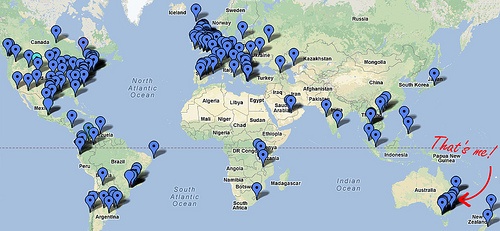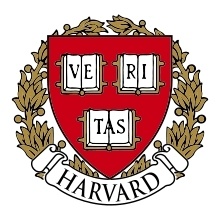How do MOOCs differ from other online courses? And are they truly open?
These kinds of questions have been the subject of increasing discussion and disagreement, and to be frank, I suspect it reflects the penchant of intellectuals to complicate matters. Consequently, the definition of a MOOC was in danger of becoming so conditional that it was of no use to anyone.
Thankfully the Oxford Dictionaries Online has weighed into the debate with its own definition:
“a course of study made available over the Internet without charge to a very large number of people: anyone who decides to take a MOOC simply logs on to the website and signs up”
I like this definition because it’s simple and concise. But is it accurate?
To answer this question, I suggest we go back to first principles and review the history of MOOCs, with a view to shedding light on their contemporary incarnation.
A very brief history of MOOCs
While MOOCs (or at least MOOC-like courses) have arguably been around for decades, Dave Cormier is credited with coining the term “MOOC” to describe the Connectivism and Connective Knowledge course delivered by George Siemens and Stephen Downes in 2008. This course was undertaken online, for free, by over 2000 people around the world.
Fast-forward to today, and a proliferation of MOOC providers have emerged including several big players. For example, Coursera offers over 300 MOOCs on its platform, while earlier this year Udacity’s Introduction to Computer Science class attracted over 300,000 students.
Back to first principles
It’s only fair we consider what Dave Cormier himself has to say on the definition of a MOOC. Aside from his blogging and speaking on the topic, he has also uploaded What is a MOOC? to YouTube.
Dave uploaded this clip in 2010. Has the definition of a MOOC changed since then?
Well, let’s consider each component of the acronym separately...
M is for Massive
A MOOC is “massive” because it attracts tens of thousands of participants per intake. For example, the University of Edinburgh’s E-learning and Digital Cultures course which I participated in last January attracted over 40,000 students. They hailed from North and South America, Europe, Africa, Asia, Australia and New Zealand.
While I found the enormity of it all a little overwhelming at first – particularly as the masses swamped the discussion forums – I found that many of them dropped off after the first week or so, while the remainder tended to self-organize into their social media forums of choice. This made the interaction a lot more manageable and enjoyable.
I valued the diversity of thinking that such a large of cohort of participants provided, and I expanded my network of peers significantly. We continue to share our experiences and expertise long after the MOOC has ended.

If a lesser known provider offers an open online course, does that make it massive? Potentially. The scalability of the cloud means it might be massive, but we could only ever know after it had been run.
Technically, then, the massiveness of an open online course is a matter of past tense. Evidently, however, the likes of Coursera, Udacity and edX have well and truly put the M in MOOC.
O is for Open
Open means different things to different people.
According to Dave Cormier, “open” means the work is accessible, participation is free, and the work is shared among all the participants.
Others have emphasized the openness of the educational resources (OERs) on which MOOCs such as CCK08 were based, but that no longer holds true as so many contemporary MOOCs are based on licensed content.
Other commentators have emphasized the openness of the platform’s architecture, but while some MOOC platforms are open source, others most certainly are not.
Regardless of the history then, these days the first O in MOOC has settled on the fact that the course is open to anyone who wishes to participate. MOOCs have no prerequisites, entrance exams, applicant interviews or tuition fees. All you need is an internet connection; and while this in itself may present a barrier to some people, a MOOC by nomenclature is an open online course, not just an open course.
That’s not to say that other barriers don’t exist either. Access is not the same as accessibility, and some people may be challenged by factors such language, digital literacy, bandwidth, firewalls and even national censorship. Notwithstanding the importance of these issues, it’s also important to recognize that at its end, the MOOC provider will not deny anyone from signing up.
O is for Online
The second O in MOOC refers to the fact that the course is delivered over the Internet. This might involve the distribution of video clips and downloadable readings, supplemented by plenary discussions, segregated social media activity, and the occasional synchronous event such as a live chat.
While some elements of the course such as weekly tasks and local meetups occur offline, the bulk of the course is delivered online.
C is for Course
Another candidate for academic argy bargy, to me a course is simply a series of instructional content delivered over a period of time.
This might involve an expert transmitting pre-defined content to the learner as per traditional college lectures and replicated by the so-called xMOOC – but not necessarily.
The so-called cMOOC has the expert seeding the course with provocative content, which the participants then analyze debate, deconstruct and build upon – and in doing so, generate content of their own. Thus the “instruction” is also sourced from peers.
While MOOCs typically run over a fixed time period with a start date and an end date, between which each cohort participates semi-synchronously, I predict this restriction will be lifted. I’d argue the massiveness of a MOOC supports flexible timing at the individual learner’s convenience, as thousands of other people at any one time will be at hand to collaborate with.
Vive la evolution
As the MOOC evolves, so must its definition. What we think of as a telephone today is very different from what we did in the 1800’s, though its essential nature remains the same. Why should MOOCs be any different?
So I think the boffins at Oxford got it right, for now. A MOOC is a course of study made available over the Internet without charge to a very large number of people. Anyone who decides to take a MOOC simply logs on to the website and signs up.
In other words, a MOOC is a massive open online course. And it always will be.
Ryan Tracey is the instructor of The Wide World of MOOCs – a self-paced online course that raises awareness of this popular form of education, and gives you the insight you need to start leveraging MOOCs for your own teaching and learning.








